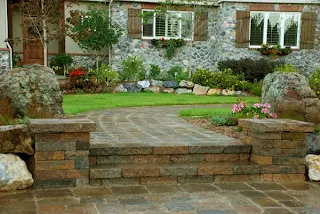 Pavers are the beauty of any property, be it a house, hotel
or resort. Therefore, no matter what kind of project you have, you have to be
very particular about the paving stone as there are varieties of paving stones
to choose from. Each stone has its utility and meant for specific purpose. For
instance, there are some stones which are well suitable for paving around your
pool and spa, while there are others which are ideal for paving garden area. So
the choices are abundant that tells you to be over attentive.
Pavers are the beauty of any property, be it a house, hotel
or resort. Therefore, no matter what kind of project you have, you have to be
very particular about the paving stone as there are varieties of paving stones
to choose from. Each stone has its utility and meant for specific purpose. For
instance, there are some stones which are well suitable for paving around your
pool and spa, while there are others which are ideal for paving garden area. So
the choices are abundant that tells you to be over attentive.
Brick pavers: These paving stones are made out of cement,
sand, fine aggregate and water. All the ingredients are mixed well and are heated
at high temperature. They give an impression of raw bricks and last for a
lifetime. They are kwon to be highly versatile and durable.
Concrete pavers: There are unlimited style, color anddesigns for concrete pavers. These stones are highly preferred because of their
ability to be safe, strong, versatile, durable and adaptable to all weather
conditions. Besides, these are extremely
easy to install, maintain and repair. Mostly, interlocking stones are
manufactured that provides the ease the installation and unique designs.
Stone pavers: Naturally occurring stones are used for
pavers. Usually, they are mined from the quarries or are collected from the rocky
outcrop. Unlike other pavers, these are not manufactured, still there are lots
of varieties in stone design and colors, and most exciting part is that they
all exist naturally. However, these stones are a bit expensive, yet are highly
popular.
Thanks for sharing this. I have been considering using paving stones to help make my backyard look a lot better than it is right now. I have been looking online for some ideas that I could use for this big project. I hope to get it started soon while the weather is really nice.
ReplyDelete